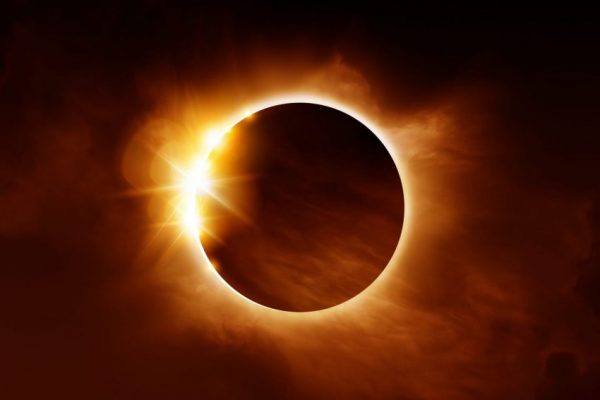Solar Eclipse Safety

On Monday, April 8, 2024, the total solar eclipse will cross a large section of New York State.
Here are some important safety guidelines to follow during a total solar eclipse.
- View the Sun through eclipse glasses or a handheld solar viewer during the partial eclipse phases. Safe solar viewers need to comply with the ISO 12312-2 international standard. Always inspect your eclipse glasses or handheld viewer before use; if torn, scratched, or otherwise damaged, discard the device. Always supervise children using solar viewers.
- Do NOT look at the Sun through a camera lens, telescope, binoculars, or any other optical device while wearing eclipse glasses or using a handheld solar viewer — the concentrated solar rays will burn through the filter and cause serious eye injury
- Do NOT use eclipse glasses or handheld viewers with cameras, binoculars, or telescopes. Those require different types of solar filters. When viewing a partial or annular eclipse through cameras, binoculars, or telescopes equipped with proper solar filters, you do not need to wear eclipse glasses
- You can view the eclipse directly without proper eye protection only during the brief period known as totality.
- You can use very specific welding filters for observing the Sun. Shade 13 or 14, best matches the view in purpose-made eclipse glasses and handheld solar viewers, however, the image is green rather than yellow-orange or white. You should NOT use adjustable and/or auto-darkening welding helmets or similar products to view the Sun. Many don’t go as dark as shade 13 or 14, and even those that do pose a grave risk to your eyesight if accidentally adjusted to an unsafe setting, or they don’t auto-darken fast enough when you look at the Sun with them.
- Even during the partial phases of a total eclipse, the Sun will still be very bright. If you are watching an entire eclipse, you may be in direct sunlight for hours. Remember to wear sunscreen, a hat, and protective clothing to prevent skin damage.
- If you are involved in parking or traffic control, use your high-visibility clothing and traffic control devices to stay safe.
For information regarding eclipse safety and how to make an indirect viewer, visit https://science.nasa.gov/eclipses/safety/
The American Astronomical Society has information regarding solar viewing safety https://eclipse.aas.org/eye-safety and safe solar viewers and filters at https://eclipse.aas.org/eye-safety/viewers-filters.
For an interactive viewing map to see eclipse times, peak sun coverage and likely levels of cloudiness during the eclipse, visit https://data.democratandchronicle.com/2024-total-solar-eclipse/.
Why looking directly at the sun during a solar eclipse is dangerous
Did you know that looking directly at the sun during a solar eclipse can be more dangerous than looking at the sun on a regular day? People mistakenly believe that it is safe to look at the sun without proper eye protection because the sunlight appears dimmer during an eclipse. People may be more tempted to stare at the sun for longer periods as they try to observe the phenomenon, increasing the risk of eye damage.
During a solar eclipse, the sun’s intense light can still cause significant damage to the eyes if viewed directly. The retina in the back of the eye contains cells that are sensitive to light but do not have pain receptors. Looking directly at the sun can cause these cells to unknowingly become overwhelmed and potentially damaged, leading to permanent vision loss or even blindness. There is also a risk of “solar retinopathy,” the symptoms of solar retinopathy may not appear immediately and can result in blurry vision, blind spots, or distorted vision.
It is crucial to always use proper eye protection, such as eclipse glasses or solar filters, when viewing a solar eclipse to avoid causing permanent damage to your eyes. Be careful of fake or counterfeit eclipse glasses, as reports of “look-a-likes” from China are flooding the U.S. marketplace.
Learn more about counterfeit eclipse glasses
